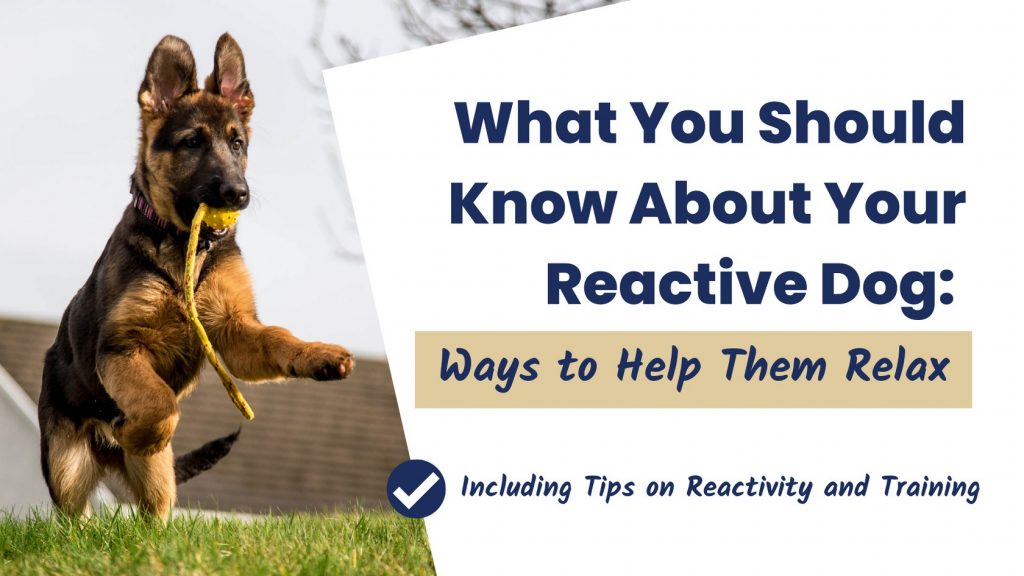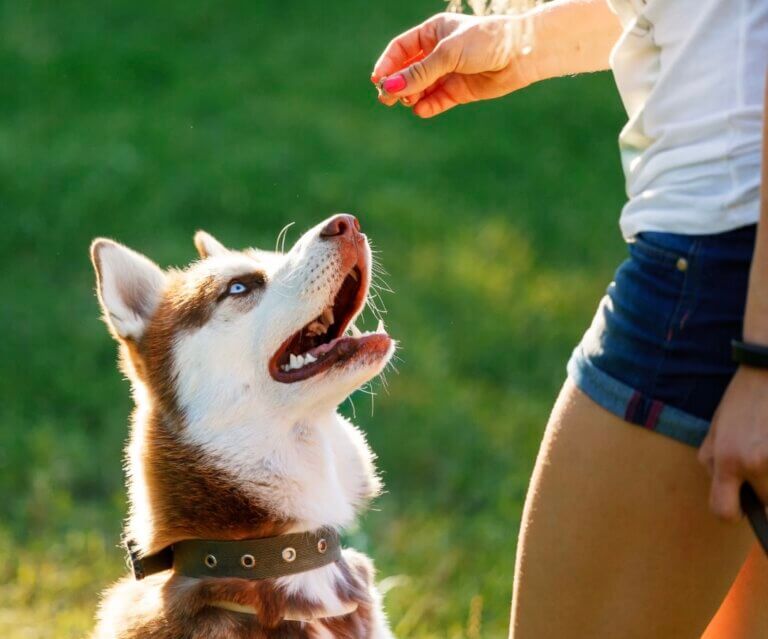Dogs that are reactive to other dogs or animals can be a challenge.
They may bark, lunge, and even attack when they see another dog or animal.
While this behaviour can be dangerous and scary for both you and your pet, there are ways to help them feel more relaxed around other people and animals.
PLUS, what you can do to help them find calm.
- What is a reactive dog, and what are some common signs of reactivity?
- Why do dogs become reactive, and how can you help them relax and feel safe around other people and animals?
- How can you help your dog feel more relaxed in public settings?
- Can a reactive dog be trained? If so, what are some of the reactive dog training techniques?
Let’s dive in!
What is a reactive dog, and what are some common signs of reactivity?
Some of the most common signs of reactivity are barking, lunging, growling, and snapping.
This dog reactivity chart below should help you figure out the triggers that may set them off.
Why do dogs become reactive, and how can you help them relax and feel safe around other people and animals?
It could be due to genetics, previous experiences (positive or negative), insufficient training, or even how they were socialised as puppies.
You can also help your reactive dog by changing your own behaviour.
Well, for example, if you are walking your dog and see another dog coming toward you, just try to remain calm and avoid making eye contact with the other dog.
Instead, focus on your own dog and keep them calm until the other dog has passed.
How can you help your dog feel more relaxed in public settings?
Avoid making eye contact with other dogs or people as much as possible.
It means you avoid putting your dog in situations where they are likely to feel overwhelmed, such as crowded places or areas with high traffic.
Can a reactive dog be trained? What are some of the reactive dog training techniques?
In fact, there are techniques you can do at home to help your pup feel more comfortable around other people and animals.
In a nutshell, reactive dog training involves gradually exposing your dog to what they are reactive to (in a controlled setting) until they no longer react.
To Sum Things Up
But with patience, understanding, and the proper training techniques, you can help your reactive dog relax and feel safe around other people and animals.
We have world-class trainers whom you can book for training your reactive dog.
If you have any questions, leave them in the comment section below, and we will do our best to answer them.


